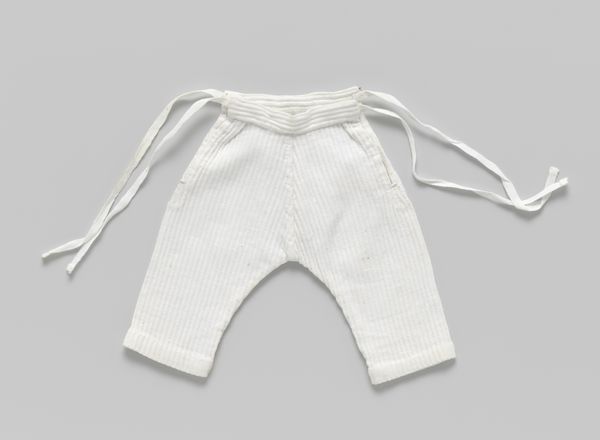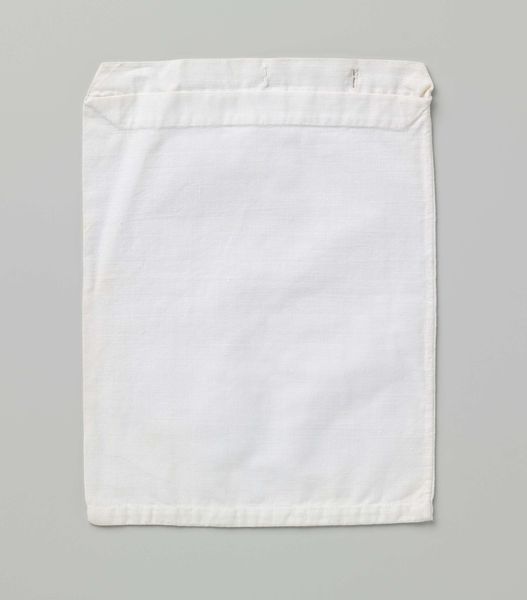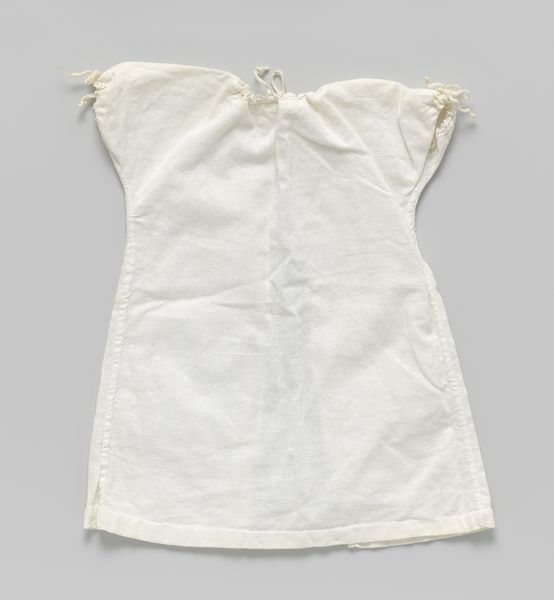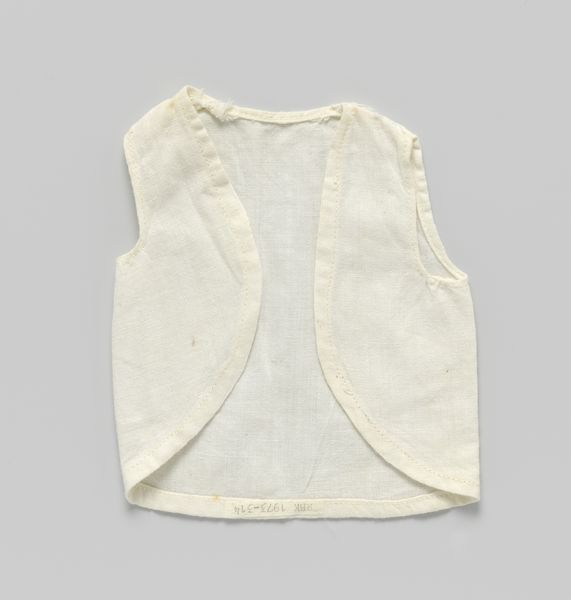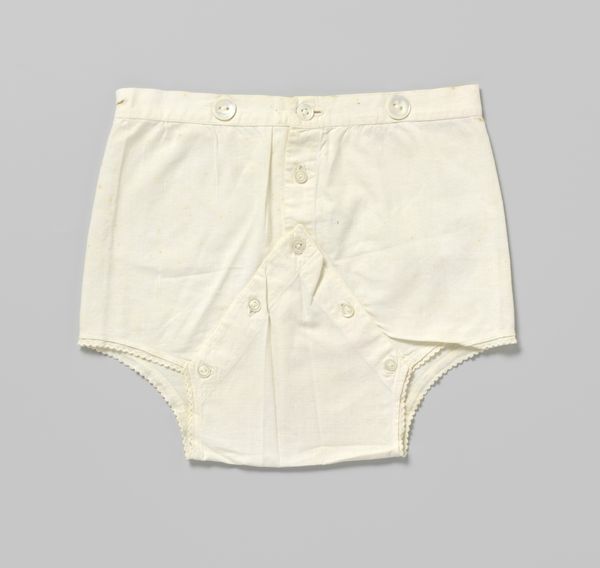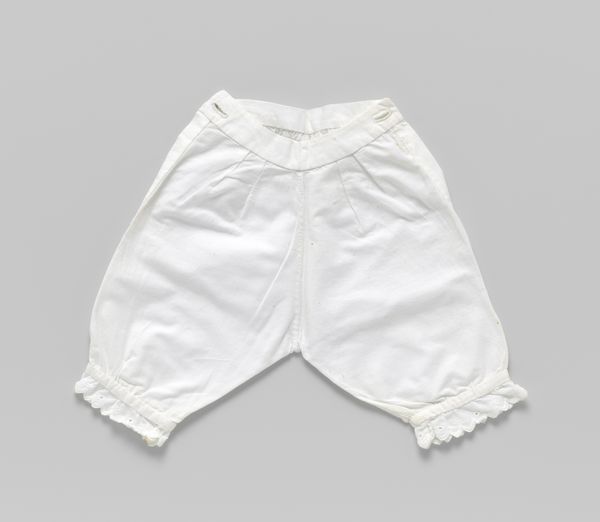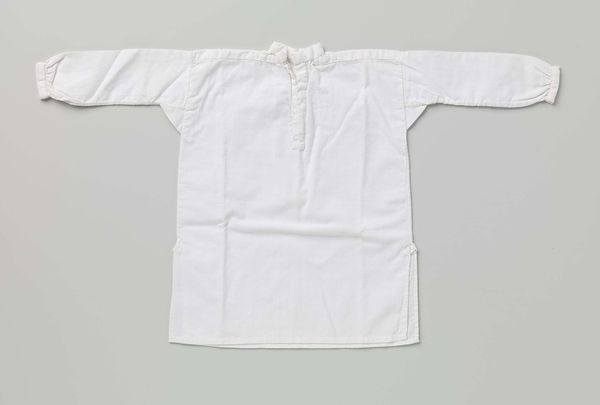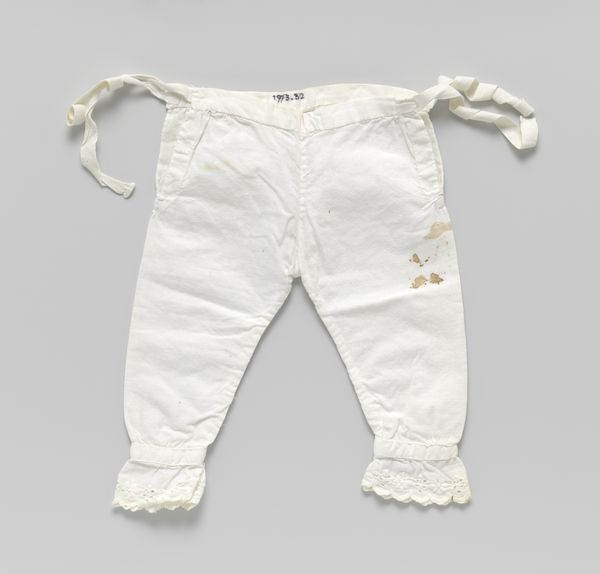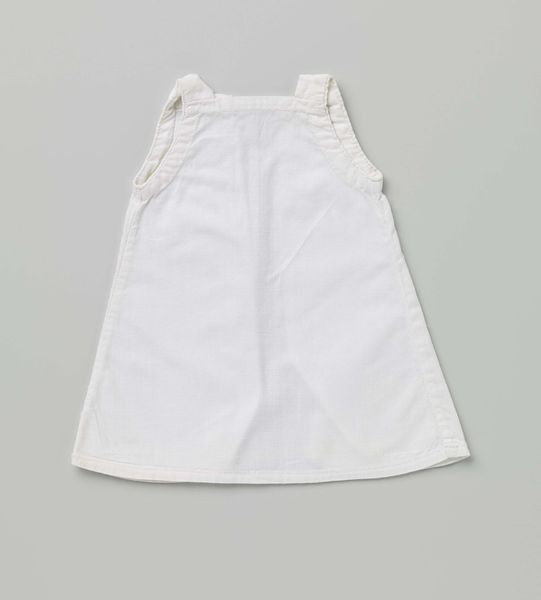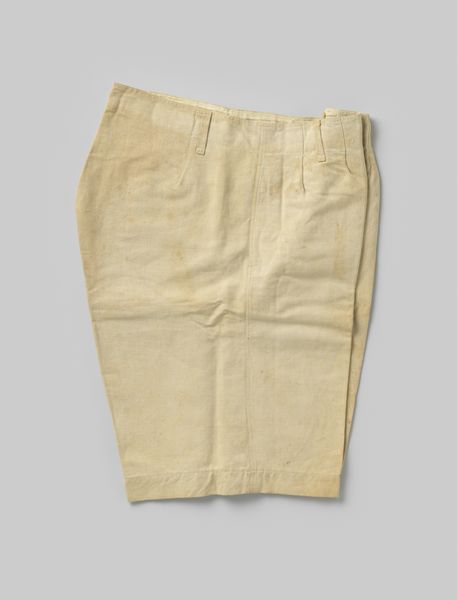
textile, photography
still-life
fashion mockup
product fashion photography
fashion merchandise
textile
clothing promotion photography
photography
clothing photography
clothing theme
clothing photo
decorative-art
fashion sketch
clothing brand
clothing design
Copyright: Rijks Museum: Open Domain
Curator: I am immediately struck by the stark simplicity of this garment. It’s an image of white cotton breeches, almost ghostly in its presentation. There's a delicate lace trim. What does it evoke in you? Editor: These are "Broek met lange pijpen en versierd met stroken" – or breeches with long legs and decorated with strips – dating from around 1910 and most likely produced in the Netherlands by P. Titjen-Baas. Viewing this through a historical lens, one considers how such simple attire might speak to the broader socio-economic conditions of the era. White garments particularly signify something—the burden of maintenance perhaps fell disproportionately? Curator: The colour and texture remind me of innocence and purity, concepts historically associated with childhood, even luxury due to the high maintenance of whites. Given their possible origin in the Netherlands, the visual association with the Dutch Masters is immediate— their detailed renderings of light and fabric created such a unique perspective. It is all deceptively simple in design. What meaning might that point to? Editor: Exactly. The functionality is undeniably present, but the aesthetic choices open avenues to deeper questions. Could we analyze its cut within the framework of early 20th-century gender norms and labour practices, for instance? Consider the material. Textile manufacture and availability would also reflect the nature of production and distribution at this moment, which speaks to larger narratives about labour and the economics. Curator: Symbolically, the breeches could be a vessel for these stories—domesticity, labor, the female experience. The way these are tied around the waist with thin cloth may symbolize restriction. We can also not neglect it may have belonged to an infant or child, opening different narratives of vulnerability. The lace adds another layer. Do you think that speaks to a specific aspiration for beauty or refinement despite the practical nature? Editor: The lace hints at adornment amidst functionality. How were they presented and viewed during their time? Are we looking at an object signifying innocence and practicality or perhaps a reflection of imposed roles and limitations of the historical context? Perhaps even a little bit of both! Curator: It all allows a rich and layered interpretation. Even something so "simple" carries incredible weight when considered across these varying axes of meaning. Editor: Absolutely. Even a common thing becomes an intimate messenger across generations.
Comments
No comments
Be the first to comment and join the conversation on the ultimate creative platform.
